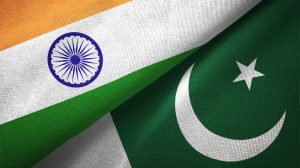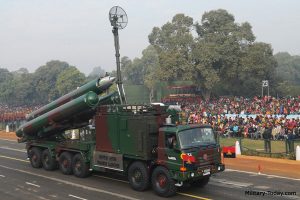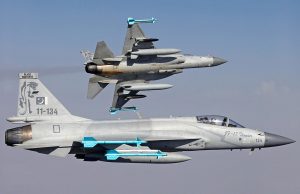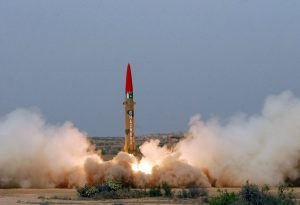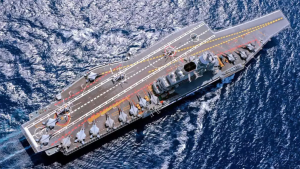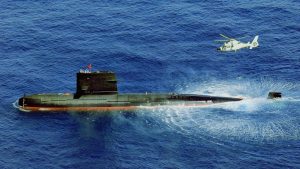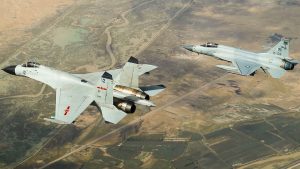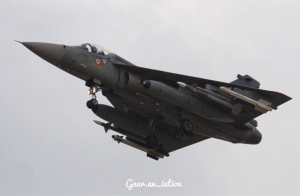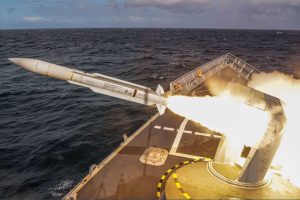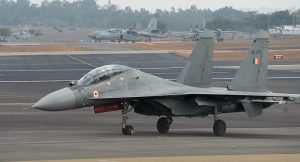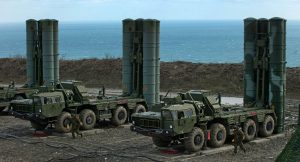The scenarios of Kashmir Fire
The release of the new “Kashmir Fire” DLC and the accompanying v1.03 upgrade for CMO is just around the corner. Let us take a look through the scenarios in this hypothetical near-future campaign, based on the historical and current tensions between India & Pakistan, as well as their respective allies.
1. Border Skirmish
Ever since the Indian Subcontinent was independent of Great Britain, conflict between the predominantly Hindu Indian population and predominantly Muslim Pakistani population has been practically constant. With several official and unofficial conflicts taking place between 1947 and today, there is plenty of bad blood between the two nations.
Recently insurgents in northern Pakistan have increased attacks into Indian held Kashmir. Indian forces have put pressure along the border to contain insurgents to Pakistan, but are so far unsuccessful. Pakistani forces have also engaged with these insurgents, however the frequency of attacks within Pakistan is minimal in comparison. Indian Armed Forces are massing in the Kashmir and Punjab regions to bolster local police and military forces in an effort to stem the insurgent attacks.
Three days ago, Indian forces launched a short incursion into Pakistan chasing after withdrawing insurgents, they retreated into India quickly, however their presence was known. Pakistan strongly denounced the Indian military action outside of their borders, and warned of a retaliation in case of a repeat offense. Tensions between the two South Asian powers are running high, and conflict appears inevitable.
Yesterday morning, Pakistani Forces made true their promise to engage any Indian forces that crossed the border into Pakistan. In addition to attacking Indian forces in Pakistan, Indian Forward Operating Bases on the other side of the border were attacked as well. The Pakistani operation also resulted in an air brawl, in which aircraft from both sides freely engaged each other.
The afternoon of 19 October was relatively calm, with both sides temporarily standing down and recovering from the events of the morning. The Indian public is outraged and demands that Pakistan pay for the lives that India lost. Following an emergency meeting of top Indian officials, the decision was made to make a retaliatory strike against Pakistani military sites.
While neither side is officially ready for conflict, it appears that the two countries will soon descend into all out conflict.
After India’s broad retaliatory actions, all diplomatic solutions have been thrown out the window for the short term. India and Pakistan have fallen into armed conflict on all fronts, and Indian forces are advancing into Pakistan, albeit slowly. Pakistan is putting up firm resistance in the air and on the ground, but a small Indian flotilla has effectively blockaded Pakistan’s coast.
Many tribal leaders in the northern mountains of Pakistan were initially highly critical of the opening of hostilities with India. This led to a strong division in the Pakistani military, as many of those who call the mountains home were strongly influenced by these local authority figures. Yesterday, large units of the Pakistani Air Force and Army defected to join the Mountain Alliance.
The Territorial Government of Gilgit-Baltistan declared autonomy from Pakistan and has attempted to remove themselves from the conflict, however neither India or Pakistan recognized this claim and are both addressing the Mountain Alliance as terrorists.
In addition, China has stated that they are going to remain out of the conflict, but are closely monitoring the conflict and will act in their best self interests. The United States has sent the John F. Kennedy Strike Group to monitor the situation from the Arabian Sea. The international community is strongly attempting to calm the conflict, however it is clear that neither side is showing any intention of slowing down.
Combat has been raging for nearly two weeks along the frontier, and neither side has made significant advances. Indian forces have taken high casualties attempting to dislodge Pakistani forces around Lahore, and so far have been unsuccessful despite an intense air and artillery campaign. Pakistani forces have also held extremely firmly at Karachi against a fairly broad Indian ground offensive.
The Mountain Alliance has proven itself a tough nut to crack, despite having no international support and seeing offensives launched against it from both Pakistan and India. Neither country is throwing a huge amount of resources at defeating the Mountain Alliance, although they have been causing issues for both countries’ forces.
Mountain Alliance forces have declared that if they continue to be encroached on by Indian forces, that they will make the country pay. India dismissed this, as the Mountain Alliance lacked any sort of credible offensive capability against the Indian population, until twelve hours ago.
After narrowly avoiding nuclear catastrophe, the Indian Military stepped up its offensives in all spheres of combat. The Mountain Alliance is still holding firm, however their Air Force is completely in shambles. Pakistani forces are on the run, however they are setting up defensive lines around major cities and infrastructure.
American and Chinese forces are closely monitoring the situation from the Indian Ocean. American diplomats are attempting to draw down the crisis, while Chinese diplomats are attempting to supply Pakistan. There have been reports of Chinese aircraft being shipped to Pakistan to supplement its dwindling Air Force, however these remain unconfirmed.
The Pakistani Navy has stayed in port at Karachi, maintaining its status as a fleet in being. Indian forces have maintained standoff from the coast due to the presence of land based SSMs. Both Indian carriers have been sidelined early in the conflict due to technical issues, but their appearance in the waters off Pakistan is near.
Four days ago Indian Naval Forces undertook a vast operation to degrade Pakistani naval and coastline capabilities and achieved high levels of success. Almost the entirety of the Pakistani Navy was sunk, either in the seas near Karachi, or at their moorings in the city. In addition, large numbers of Pakistani naval aircraft were destroyed, as were SSMs.
In a desperate plea, Pakistan acquired a number of old Chinese aircraft to supplement their dwindling air force. China has changed stances and has discouraged India from further offensive action, leading to speculation that China may soon support Pakistan outright. China has increased their naval presence in the Arabian Sea, and is stepping up air patrols along the border.
The United States is still closely monitoring the situation and has a strong naval force in the region.
The Indo-Pakistani War has stunned the world. The speed at which Indian forces have advanced towards major Pakistani cities has surprised many foreign observers, but the losses both sides have taken is staggering. Pakistan is near the brink of defeat, and has pleaded for foreign assistance to China as well as other Muslim countries. China announced it was sending an expeditionary force to Pakistan to “protect the interests of the Chinese People and maintain security for Chinese assets abroad”.
Saudi Arabia and Indonesia also answered the call of Pakistan, sending forces to protect major Pakistani targets. Open conflict between China and India doesn’t seem near, however the world is fearful of the possibility. Pakistan will likely try to lead a new counterattack against Indian forces, but they need to stem the flow of Indian forces and supplies to the front line first.
The Pakistani counterattack against Indian forces has been broadly successful, and some of the pressure on the Pakistani civilian population has been reduced. China is no longer disguising its involvement, and has sent aircraft and material to support the Pakistanis. In addition both Chinese aircraft carriers have left port and are enroute to the Indian theater to open an air front on the eastern half of the country. Indian naval forces are not in any position to resist major Chinese naval operations, causing fears of a blockade of India.
India has looked for foreign assistance, but none have come to their aid. Many western countries have sharply criticized the Chinese intervention, but none have taken forceful measures. The United States announced that the Abraham Lincoln Strike Group would be deployed to the region to continue to protect maritime trade and safe passage. They will support the currently deployed Kennedy Strike Group.
In the last week, Pakistani and Chinese land forces have advanced over 250 kilometers, moving the frontline from well inside Pakistan to between 40 and 70 kilometers into India. Chinese armor and aircraft are causing incredible damage and disruption to Indian forces, and allowing the remaining Pakistani forces to capitalize. With the stunning advance, many Western observers fear India is in danger of losing the war. American forces have closed in near the shore to display their presence, and an expeditionary strike group has deployed to the area.
The United States has ordered all of its civilians in India to return to the United States, however India closed their major international airports, stranding hundreds of Americans in the war torn country.
It took little more than a month for the Pakistan-India conflict to erupt into a war involving superpowers, now the intense regional conflict has sparked global involvement. The United States successfully evacuated their civilians from the conflict zone, but not without resistance. Pakistan fully enforced their no fly zone and the United States had to fight their way in to rescue their citizens. Pakistan was quick to criticize the United States “reckless aggression and blatant intervention”. The United States fired back stating it was “defending its citizens abroad against the reckless warfare being conducted by Pakistan”.
This incident was enough to spark conflict between the United States and Pakistan. The day after the evacuation, a Pakistani gunboat sailed within 500 meters of the USS Pickney, an American destroyer operating about 100nm off the Pakistani Coast. It is unclear who fired first, but the Pickney sank the gunboat, and all Pakistanis onboard were killed. Pakistan declared that it would “fire on any American forces without hesitation” in response.
Due to the increased tensions with the United States, Saudi Arabia and Indonesia have withdrawn support from Pakistan.
A week after the United States formally intervened against Pakistan, India has stemmed the advance of Pakistani forces and the frontline has settled. China has deployed both the Liaoning and Shandong carrier strike groups to put additional pressure on Indian forces, and the United States has responded by bringing the Abraham Lincoln strike group to the theater.
China stated that it would engage any American aircraft attacking Pakistani targets, which has led to a slight lull in American air operations as brass and politicians weigh their options. Last night, the US congress passed a secret vote, and today the results of that vote will be seen.
Pakistan and China have been halted on the ground, and the Indian military can catch its breath. The majority of the forces engaged are in the Kashmir region and surrounding areas, however the south has been the most dynamic theater. India, with the help of the United States, is pushing hard to attempt to isolate Pakistan from the sea. The major Indo-American victory at sea last week has made this goal a very real possibility.
Pakistan has mined the waters off of Karachi in order to prevent American and Indian shipping from threatening the shore.
India has ambitious plans for the future of the conflict, and today those plans will begin to unfold.
The United States’ involvement in the Indo-Pakistani conflict has completely shifted the tide of the conflict in favor of the Indians. After the successful landing at Karachi, Pakistan’s major lifeline to the sea is gone. Ground fighting is intense, and neither side is conceding an inch of land. India is pushing into Pakistan, but it is at high cost to both sides.
China has stepped up its involvement immensely on the ground, and is keeping Pakistan reinforced through intense air commitment and airstrikes against the Indian forces. The area around PAF Mianwali and PAF Murid is the most heavily defended airspace in the world, thanks in large part to the Chinese IADS and CAP. India is going to struggle to crack the tough shell that has become the greater Islamabad area.
In the last month, Indian forces have pushed Pakistan back to the outskirts of Islamabad. China and Pakistan have fortified the airspace heavily in the area, with an intense IADS and combat air patrol net. The Indo-American coalition has strangled the Pakistani capital, but Pakistan is not backing down.
American forces still have stayed off the ground, despite Indian efforts to receive support on the ground. Despite not deploying boots on the ground, the United States has launched an intense air campaign against the Pakistani and Chinese forces. The Indo-American coalition is preparing for an incredible air offensive against the stronghold of Islamabad, which will prove to be a very difficult task.
Indian forces are closing in rapidly on the last holdouts of Pakistani resistance. The fighting has been brutal, with thousands of casualties on both sides. China has withdrawn the majority of their forces, however aircraft are still based at Pakistani airbases to support the dwindling Pakistani Army.
The war is nearing a close, with a clear Indian victory in sight. Pakistan has stated that they will fight to the end through whatever means necessary, including a nuclear option. Every world power has strongly denounced this option and the United Nations are frantically attempting peace negotiations, but neither India nor Pakistan are interested in anything short of complete victory.
Comments
Leave a Reply
You must be logged in to post a comment.




